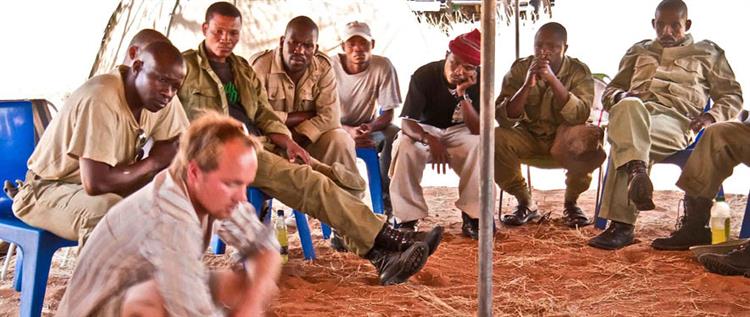Kaa Research Project Botswana
Kaa Research Project
This research project looks at wildlife biodiversity in relation to gradients of human land use, including specific responses to active livestock watering points and settlements. Borehole development and livestock expansion continue to drive major conservation challenges in this ecosystem naturally devoid of surface water. Results will allowto assess cumulative impacts of present borehole development in the southern Kalahari, and provide predictions of change to wildlife communities resulting from scenarios of livestock expansion in remaining wildlife areas. This is one way that results of this project can guide conservation strategies.
Understanding where wildlife species are present and where they are not, how many animals there are, and how their populations change through time and space, are deceptively simple questions. Yet in most landscapes where human activities interact with wildlife, their answers are necessary for sound conservation. The research project has two broad aims: One is to understand how animal spoor can be used for more inclusive and comprehensive wildlife monitoring. The researcher are investigating how spoor counts translate to wildlife density (a useable parameter in conservation management), and disentangling the factors that confound these relationships. Secondly, they applying spoor approaches to answer questions of habitat selection and wildlife responses to land use practices.
The Kaa gate research project is an application of ancient skills to meet the rigour demanded by modern conservation science. It has the support of the Botswana government through the Department of Wildlife and National Parks, and we maintain an excellent working relationship with local villages.
Understanding where wildlife species are present and where they are not, how many animals there are, and how their populations change through time and space, are deceptively simple questions. Yet in most landscapes where human activities interact with wildlife, their answers are necessary for sound conservation. The research project has two broad aims: One is to understand how animal spoor can be used for more inclusive and comprehensive wildlife monitoring. The researcher are investigating how spoor counts translate to wildlife density (a useable parameter in conservation management), and disentangling the factors that confound these relationships. Secondly, they applying spoor approaches to answer questions of habitat selection and wildlife responses to land use practices.
The Kaa gate research project is an application of ancient skills to meet the rigour demanded by modern conservation science. It has the support of the Botswana government through the Department of Wildlife and National Parks, and we maintain an excellent working relationship with local villages.

Derek Keeping introducing Kaa Research Project to local community members
Photo J. Burger


